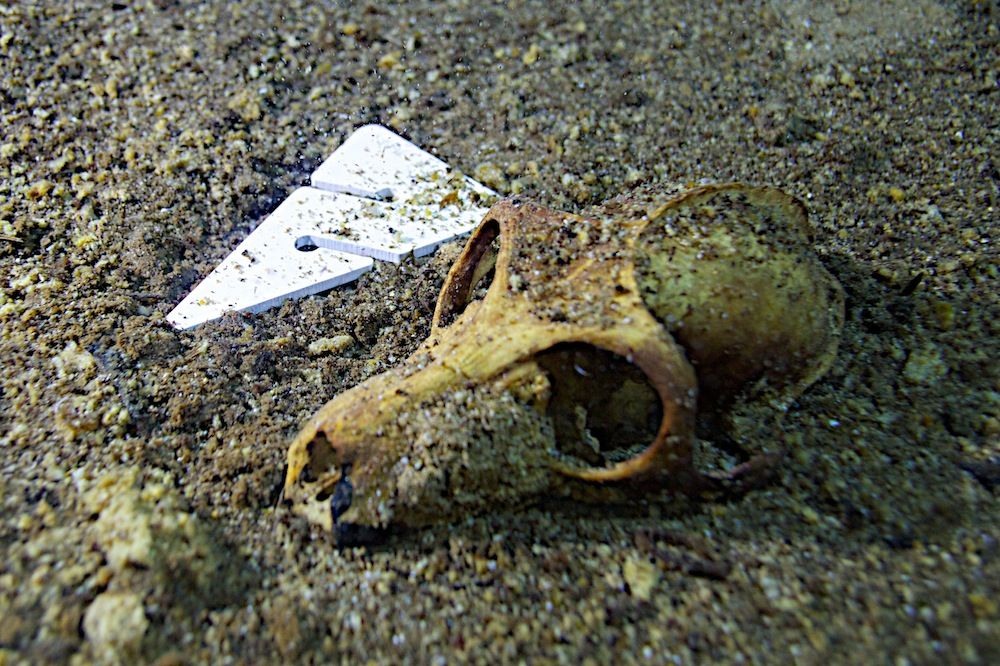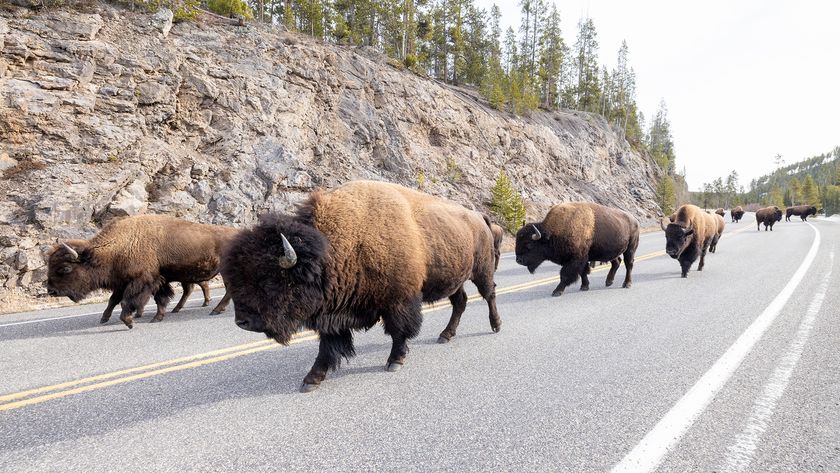
An underwater cave in Madagascar has revealed hundreds of fossils from an extinct lemur, possibly washed into the underground trap by storms thousands of years ago.
The lemur graveyard also contained fossils from a suite of extinct animals, including primates, hippos, a crocodile and the island's largest predatory cat. The sinkhole where the bones were found may have preserved the fossils for a few thousand years, said Alfred Rosenberger, an physical anthropologist at Brooklyn College, City University of New York, who led the team.
"Pretty well preserved is an understatement," Rosenberger told Live Science. "The skulls and jaws are virtually complete and very often, even undamaged. So we'll pick up 12 skulls of one species and they'll all be absolutely perfect."
It's not clear exactly how the animals arrived in the watery grave, though one possibility is that the animals were swept underwater during a seasonal hurricane or a flash flood, Rosenberger said. [See Images of the Stunning Fossils in a Madagascar Sinkhole]
Underwater tombs
Sinkholes can often provide unprecedented views into the past, because the still, cold water protects bones from the ravages of bacteria, wind and waves, Rosenberger said. He and a team of cave divers were exploring underwater caves in the Dominican Republic when his lead diver, Phillip Lehman, got a tip about a sinkhole in Tsimanampetsotsa National Park, an arid region with seasonal storms in Madagascar whose limestone cliffs have been eaten away by water and wind over time, leaving a landscape of caves and tunnels resembling Swiss cheese.
To see what was inside, a group of cave divers traveled 82 feet (25 meters) below the water's surface into a vertical sinkhole called Aven (which means "sinkhole" in French). At the transition zone where the dimly lit water transitions to utter blackness, the team found hundreds of animal bones, from dozens of species.
Sign up for the Live Science daily newsletter now
Get the world’s most fascinating discoveries delivered straight to your inbox.
Because cave diving is incredibly dangerous, requiring rigorous safety protocols, and scuba divers can only be underwater for a few hours, the team was not able to completely survey the fossils. But what they found was stunning.
Menagerie of creatures
Many of the fossils belonged to an extinct lemur, which the researchers have tentatively identified as Pachylemur insignis. Four fossils belonged to predatory cats, including the massive, extinct cat Cryptoprocta spelea. The oldest fossils in the cave came from animals that died a few thousand years ago, while others came from a still-living rodent that was introduced to the island by humans, Rosenberger said.
It's still a mystery how the animals came to rest there. Unlike in other caves, the animals, other than perhaps the crocodile, likely didn't deliberately enter the sinkhole, Rosenberger said.
Lemurs "don't live underground, they don't shelter underground. It's very unlikely that the enormous accumulation of bones could have been because the animals stumbled in there," Rosenberger said.
Instead, it's possible that a series of events, such as flash floods or typhoons, swept the animals away over time, Rosenberger said. The presence of stalagmites, which form from the constant drip-drip-drip of mineral-rich water from the ceiling to the floor of a cave, suggests the cave was once dry, or there wouldn't have been any floor on which the water could land, Rosenberger said. By dating the thorium and uranium isotopes, or elements with different numbers of neutrons, the researchers could determine when some of the flooding events occurred, the researchers report in their paper, which was published in the April issue of the Journal of Human Evolution.
Rapid extinction
Because many of the fossils have been found on researchers may soon be able to date the fossils, which could help them determine when some of these historic creatures went extinct
That could also shed light on one of the island's most pressing problems.
"We are losing the animals of Madagascar to extinction at an enormous rate," Rosenberger said.
Humans first colonized the island roughly 3,000 years ago, which may overlap with when some of these fossils were deposited, so the cave could help determine whether humans played a significant role in the islands' extinction crisis, Rosenberger said.
Follow Tia Ghose on Twitter and Google+. Follow LiveScience @livescience, Facebook & Google+. Originally published on Live Science.

Tia is the managing editor and was previously a senior writer for Live Science. Her work has appeared in Scientific American, Wired.com and other outlets. She holds a master's degree in bioengineering from the University of Washington, a graduate certificate in science writing from UC Santa Cruz and a bachelor's degree in mechanical engineering from the University of Texas at Austin. Tia was part of a team at the Milwaukee Journal Sentinel that published the Empty Cradles series on preterm births, which won multiple awards, including the 2012 Casey Medal for Meritorious Journalism.












